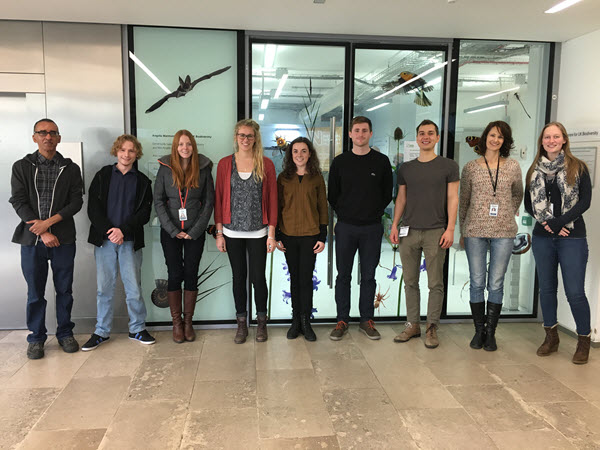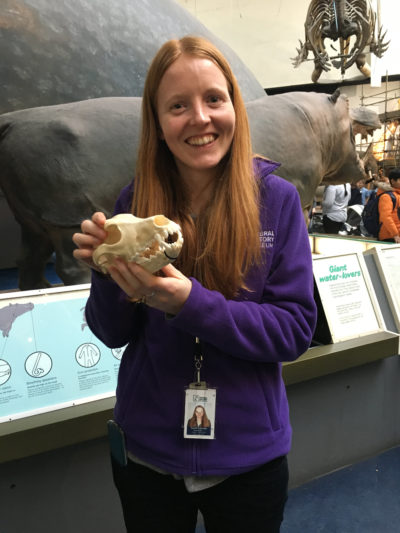We have just reached the mid-point of phase 4 and we are all heartbroken to only have a few weeks left working as Identification Trainers for the Future at the Natural History Museum. That being said we’re too busy to be to wallowing in self-pity!
We are all very busy working on our final projects. My final project aims to create an online multi-access key to UK pug moths using the framework devised by Tomorrow’s Biodiversity Framework. Jas is creating a key to a group of Ichneumonidae parasitic wasps belonging to the sub-family Pimplinae, tribe Pimplini. To create his key Jas is using Stacker photography equipment and has received training to enable him to use the Scanning Electron Microscope. He hopes to create a tool which makes it easier to identify these important but much overlooked species. Joe is planning to create an identification guide to 21 species of Fabaceae (clover family). He is currently gathering images from various sources and planning the layout of the ID guide. Krisztina has been busy taking images of identification features of Tenthredo species. Her aim is to create a beginners guide to help ID this sawfly family. The Guide will include various photographs and an introduction to sawflies ecology, distribution, flight period and food plant. Sophie’s final project is going to be an online multi-access key to slime moulds. She is starting with the genus Badhamia and hopes to build on it and add more genera in the future. She is currently taking images for the key in the Sackler Lab at the Museum so that there are clear images for reference.

In the middle of January we hosted the next cohort of ID trainers, showing them around the museum and giving them an insight into what it’s like to be an ID Trainer at the NHM. They are all a lovely bunch and we wish them the best of luck for when they start in March.

You can find out more about the trainers on the NHM website.
At the end of January we all worked together, using knowledge that we had gained throughout the year to plan and deliver a workshop at Gilbert White’s House in Selborne. It was a workshop to introduce participants to the topic of creating their own entomology collection. This was a great day and it was really satisfying to draw on our experiences this year, from our teaching course, to learning how to pin and card right at the beginning. The field centre based in an 18th century barn is a wonderful place to host an entomology workshop as it is part of a SSSI and surrounded by a beautiful meadow and encircling woodland. We all learned something new from the workshop and feel more confident to go on and work to engage more people in biological recording. We also had good feedback from everyone attending the course and hope to go back again soon.

At the beginning of February we began our placement with the Museum’s Learning and Engagement team where we gained experience in education-delivery and scientific communication. For the last week we have worked with the learning volunteer team in galleries promoting learning from objects: namely mammal skulls, using the: describe, reflect, speculate method. This has involved working with a range of age groups from toddlers to adults to engage the public with museum specimens. As well as all this we are all very busy applying for jobs and attending interviews in preparation for when the traineeship inevitably comes to end.


In the coming weeks we still have a lot of work to do and much to look forward to. We will continue working with the Science Education Team where we will work with school and family groups within the Museum’s Investigate Centre, encouraging both children and adults to explore animal, plant and geological specimens using microscopes and other ID resources to gain a better understanding of the natural world. We will continue working on our final projects and job applications and we still have media training to look forward to.
Written By Nicola Lowndes
